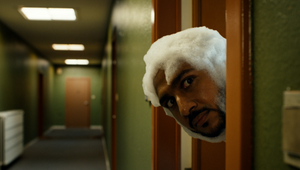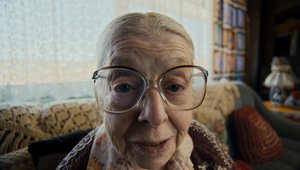
This Crying Baby Is Fighting for Better Breastfeeding Laws in Spain

According to a recent study on social tolerance of breastfeeding in public spaces, one in two women in Spain have had to hide when breastfeeding in public. In addition, 63.5% of women have felt judged when breastfeeding in a public space. Teta&Teta, a non-profit brand, wants to change that. With their latest campaign, Teta&Teta, is aiming to normalise breastfeeding and safeguard breastfeeding women, a right which is protected by the WHO and UNICEF.
"Babies have a here and now need. When a baby wants to breastfeed, it is a basic need for them. Trying to console him and prolonging the feeding... generates stress, anxiety, and irritability for the baby. One of the principles of breastfeeding is that most of the time, it is essential to breastfeed on demand". Laia Aguilar- IBCLC de LactAppa mentions
At a recent launch event, in addition to sharing the results of the study, mothers gave testimonials about their lived experiences of breastfeeding in public. However, now the public will be able to feel for themselves, first-hand, a mother’s experience. Specifically, with a large baby whose crying will not stop until someone acts. This baby can be found in Madrid central at Reina Sofia Museum Square.
The agency behind the work is LOLA MullenLowe for TETA & TETA.
“A baby's only weapon to get what it wants is its cry. That is why we have used this cry to fight for the fundamental right of babies and mothers. From the beginning, we understood the need to raise awareness about an issue that women suffer more directly but that affects us all as a society. Although we may think it is something normalised, when you listen to the testimonies of mothers and see the situations they’re facing, you realise that we still have a long way to go to normalise it. Therefore, this campaign is vital and has an obvious objective, to achieve a Law that protects Breastfeeding in Public Spaces; the challenge is that we do not know when we will achieve it, and, therefore, we do not know how long this campaign will last. Still, we hope to have a proposed law on the table very soon.” said Saray Gonzalez & Helena Marzo LOLA MullenLowe creative directors.
The baby was created by Cristina Jobs, a hyperrealist sculptor. First, 3D scans of several real babies were taken, then 3D printed. This was followed by a detailed and labour-intensive process requiring many hours. Moulds were then made, and silicone was used to craft the structure, before it was skilfully painted to achieve the hyperrealism of skin.
The baby will be guarded by security 24/7, but it is impossible not to hear its cry. That's why every passer-by who hears the baby crying will approach to see what it is all about, successfully raising awareness of the cause.















